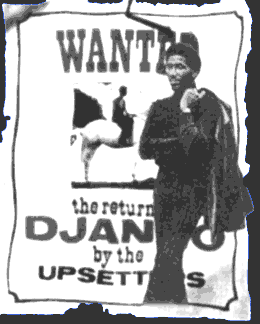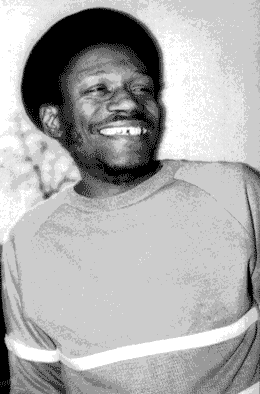





THE ECHOPLEX, REGGAE, RASTAFARI - and the DJs
THE ECHOPLEX
When Coxsone Dodd, the STUDIO 1 owner, came back from a trip
to England in 1968, he
brought some gadgets with him, among
them an electronic device called an ECHOPLEX, a
delay box.
And this very kind of box changed music forever - especially
from today's
point of view. It changed the way music is
produced, the way it is perceived and
along the way defined
a very important thing: it set a completely new aim for what
music can achieve. This new dimension, which later would
emerge as DUB, would not
have been possible without REGGAE -
and the Echoplex of course.
So Coxsone experimented with the new gadgets and accidently
sent the guitar through
the delay box which caused the guitar
chord to come out DOUBLED. This doubled chord
on the offbeat
became one of the main elements to identify reggae later on.
The use of effects and new recording technology (like bigger
mixing desks) changed
the sound of music rapidly. A very good
example for this transition from Rocksteady
to Reggae is the
Heptones album "On Top" on Studio 1. While the overall feel
of the
record is still rocksteady (lots of choral singing,
sweet harmonies, mid-tempo) the
sound is produced very crisp
and some of the song structures definitely show the
hypnotic riddim concept. Check out tracks like "Party Time" or "I love
you".
The record was produced by Lee Perry, then still working as
producer for STUDIO 1 and
already hints at the sound he was
to create later on with his own productions. He
soon left
the label because of the low payment and other arguments and
started his
own career. (See below)
Leroy Sibbles, member and songwriter of the Heptones proved
to be an excellent bass
player and extraordinary singer with
an outstanding voice, who had some great
classics later on
like "Garden Of Life" (on the Lee Perry compilation OPEN THE
GATE
on Trojan) and - probably his best song ever - THIS
WORLD on the legendary WACKIEs
label. Especially his distinct
voice can be heard much better on these releases since
there
is no more choral singing. Great stuff!
REGGAE
While Coxsone Dodd changed the sound of music at that time
due to newly available
technology, the concept was changed
by others. Guys like Bunny 'Striker' Lee (who
worked as a
sales- man for Duke Reid's TROJAN label) or LEE 'Scratch'
PERRY (who was
something like an inofficial producer at
STUDIO 1 and turned out many hits there)
left the two big
majors and started releasing their own records. They hired
younger,
not very experienced musicians, and soon found an
own style that got a name fast:
REGGAE.
Compared to rocksteady the bass steps in the center of the
tracks much more
clearly. While playing at still a slower
tempo the bass drives the rhythm in an
offbeat
fashion and plays
a more or less distinct melody, that produces together with
an
unvarying two-chord pattern an extremely nice looplike
hypnotic effect. Because
the
overall speed is quite low
(around 80 bmp +/-10), there is more space for the
drums
and
cymbals to experiment and vary - and to put in effects,
another element
that
keeps the tracks constantly interesting.
As a result of this many reggae songs
sound
slow and fast
(ca. 150-160 bpm) at the same time. This paradoxon is
definitely
one of
the very reasons, that it is almost
impossible to get bored with reggae -
provided
you once
understood the concept and found it going in sync with your
inner
metronom.
This concept is usually called the concept
of RIDDIMS, very simple brought
to the
formula: bassloop,
two chords, sometimes a short melody lick.
LEE PERRY and The Upsetters, his alltime backing band,
created a sound of their
own at that time. Hugely influenced
by Ennio Morricone's soundtracks for Italo-
Western they got
a big sucess with records like 'The Return Of Django', which
hit big even in England and lead to a six-week tour there (a
novum for Jamaican
artists). Perry set up his 'Upsetters
Record Shop' in Kingston, which functioned as a
promotional
base for his Upsetters recordings, bar, rehearsal room and
herb counter
in one.
During that time Lee Perry also produced
the first record of
a young talent
named Bob
Marley ("Duppy
Conquerer") , who
later became THE
multi-million dollar-export-hit of
Jamaica,
today one of the
most important
factors in tourist
merchandising industry
and
for some
reason the one
and only
person whom many people can
identify
with
reggae.
The Upsetters were quite popular at that time and Lee Perry
a well-known producer
with an unique style, but one important
thing for truly independent creative work was
missing: an own
studio. The constant ticking of the clock in the background
of a
studio with rented time often proved to be
a distraction
and many sessions could have
turned out better. So in 1973,
when the money situation was well, Scratch decided to
build
his own studio, the BLACK ARK, were many of Reggae's and
Dub's alltime classics
were recorded. (continued in DUB)
JAH RULE: RASTAFARIANISM
Another aspect that was at least as important for Reggae as
the availability of new
technology was the emerging of
Rastafarianism. It set the music in a completely new
context
and defined a new goal: 'to hand down a MESSAGE to a
danceabele beat' as some
analysts called it. With Rastafari
the vocabulary and content of the lyrics changed
radically,
the message being constantly linked with the music. Suddenly
the realities
of the ghettos, poverty, civil violence and
religiosity stepped in the center and
were the all
transcending background for the music.
Rastafarianism first of all gave many Jamaicans a cultural
identity,
stating the fact
that all black people have their
roots
in the homeland Africa, so every black person
- no
matter where they may live today - is basically an African.
The prophet Marcus
Garvey also said
in
1929 in one of his
sermons that at one time a divine black man
will
be
king
again in Africa. This prophecy came
true only one year
later with the
coronation of Haile Selassie in Ethiopia, who
had the byname of Ras Tafari,
fulfilling the prophecy and
giving the movement a name.
As Ethiopians being one of
the
twelve tribes of Israel (as written in Exodus in the Bible)
and having a divine
black king, Ethiopia became the symbol
for the homeland and its colours (RED, GOLD
and GREEN)
identify all Rastafarians until today. The movement gained
importance when
more and more people decided to live in the
countryside hills, grew dreadlocks and
started living
strictly following Christian values (do good in life, love
one
another, believe in JAH the Creator, etc.).
In the Rasta
living communities also drumming and - not to
forget -
smoking the herb
played an immense role and when
some Rastafarians became involved with music
production
(like the famous drummer Count
Ozzy) they brought with them
their styles
of
living and the
philosophy. Many musicians
adopted this way of living and
Africa,
Babylon, Jah and weed
but
also poverty, living in the ghettos and the deportation
of
black people as slaves became the ever-present themes of
reggae. So Reggae is
indeed much more than
just another style
of
music, it is a philosophy and a way of
life.
The most famous roots reggae anthem is certainly the
ABYSSINIANS "Satta Massagana"
 , which articulates this
mixed feeling of sadness and pride of being African
, which articulates this
mixed feeling of sadness and pride of being African
intensely.
There are countless Satta-versions around and the
song was
sung even in
churches during the service.
STUDIO ONE
With the new
found sound, style and linked background
philosophy
absolutely
groundbreaking
records were released.
STUDIO ONE
had its best time then and countless
classic
riddims
were created like "AMARGEDDION
TIME", HORACE ANDYS "Money
Money",
"Skylarking" and his whole "Mr. Bassie"-LP,
SOUND DIMENSIONs "Drum Song",
tracks with
titles like "Ethiopia", "Sons Of Slaves", "Run
Babylon" or Johnny
Clarke's anthem
"None Shall Escape The
Judgement" are 100%
roots and show 100% what reggae was
when
all these elements
came together for the first time.
A good example for listening is Leroy Wallace's "Far Beyond"
from the STUDIO 1
"Roots" compilation. Here you can hear new
sound (echos!), style and content all
together. One of my
alltime favourites. 
Parallel to the changes in life in Jamaica the movement and
self-consciousness of
black people in the States created
a
new musical style called SOUL, which
also had an
immense
impact on
reggae a bit later on. Many people in Jamaica could
adopt to
the
content and
themes of
the songs (the problems
sung about
being exactly the same),
everything wrapped in a
cool danceable beat. So lots of reggae-versions of famous
soul songs
were
released, many of them kicking even more than
the
originals
due to a
different and rougher production
style.
RECORDS:
Check out the STUDIO 1 releases of that era, first of all
the SOUL, ROCKERS and ROOTS
compilations. Also highly
recommended are the STUDIO 1 re-releases on SOUL JAZZ
(100%,
200% and
so on).
These records
define what reggae is all
about and are
absolutely essential!
Another incredible
compilation of reggae-soul tracks is DARKER
THAN BLUE, all
songs being cover versions but most of them better than the
originals!
DJs and TOASTING
One important link in the history of that time is still
missing, a link that would
change the music
again forever and
emerge later as RAP: the DJs and TOASTING.
After
guys like Sir
Lord Comic or King Stitt started chatting
over
some records
during a dance the breakthrough came with a
DJ
named U-Roy
and King
Tubby's dub
plates. First mainly for
economy reasons
producers started releasing 'versions' of
their hits on the
flipside of a record, being the original
song minus the voice
and
some remixing done with reverbs and
EQs. U-Roy then had a big hit with 'Wear
You To
The
Ball',
where he chanted in a kind of call and
answer
arrangement
over the
Paragon's rocksteady song. (You
can
listen to the
original in the SKA section!)
This proved to be an extraordinary success and at one time in
1970 U-Roy had five (!)
of his toasting versions in the
Jamaican Top Ten. Especially old Paragons songs were
huge
DJ hits ("The Tide Is High" or "Flashing My Whip", which is a
toast on "Only A
Smile"). Soon lots of others followed this
way of
production - talking over a version
of an already
well-known
hit single and simply recording this mix of voice
and music.
Check out Scotty's "Draw Your Brakes" (on Keith &
Tex's "Stop That Train") and
"I Worry" (on Derrick Harriot's "Do I Worry"), Dennis Alcapone's "Spanish Amigo" (on
Ken
Boothe's "Old Fashioned Way"), Big Youth's "Screaming Target"
on Dawn Penn's
STUDIO 1 smasher "No, No, No" or I-Roy's "Blackman Time", an unforgettable roots-DJ-
tune. If you listen to many of the DJ releases today some of them
could without any
doubt already be called 'RAP'-records.
In his excellent liner notes in 'The History
Of Rap' Curtis
Blow defines Rap as
"talking in rhyme to the rhythm of a
beat". This
criterion is clearly fullfilled with many DJ
tracks and if you know that DJ Kool
Herc, who is commonly
known as the inventor of Rap, is a Jamaican-born DJ who moved
to the Bronx, the trace is clear.
RECORDS:
Highly interesting in this field are the TROJAN-DJ-BOX and
the STUDIO 1 'DJs' and
'ROCKERS' compilations with loads of
kicking tracks.
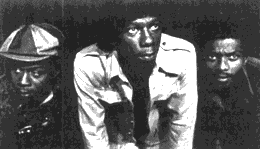
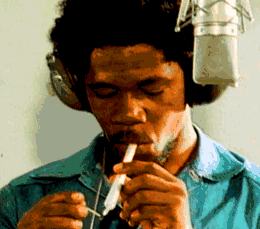
![]()
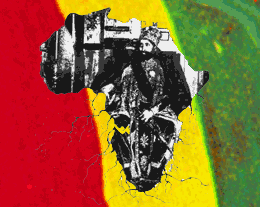
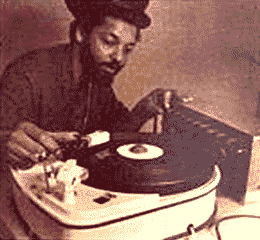
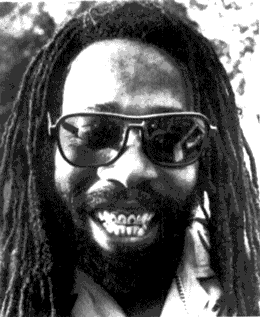
![]()

